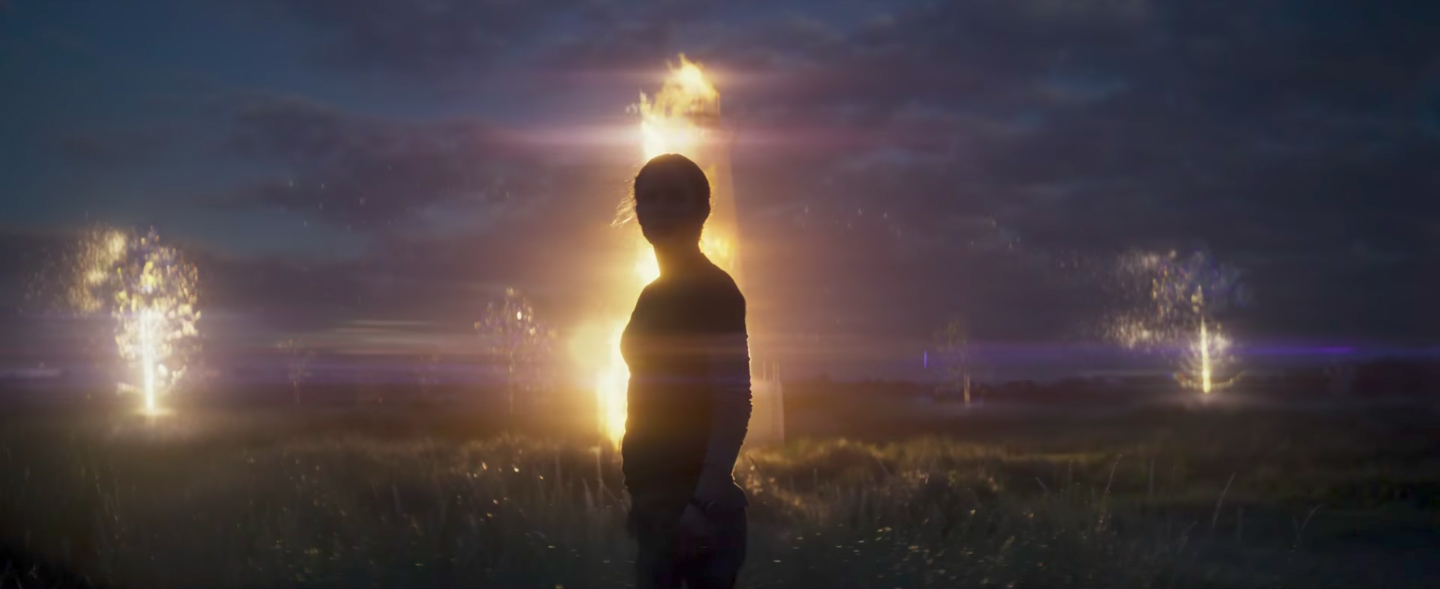When it comes to truly great scares, there’s nothing that lingers in your mind quite like psychological horror. I tend to stay away from horror films these days. I usually find them uninteresting, with splintered plot lines and way too more gore. I don’t deal in splatterpunk; it’s not my cup of arsenic. All that excess blood just covers up what could have been a decent story, and I feel a lot of contemporary horror has lost its finesse. Scaring people is so much more than severed limbs and bloodstains.
Psychological horror is by far my favorite. When I first saw the trailer for Jennifer Kent’s The Babadook late last year, I was terrified. You know it’s bad (or really good) when a minute-long snippet gives you the creeps.
The story centers around Amelia (Essie Davis), a single mother dealing with the death of her husband while caring for her seven-year-old son, Sam (Noah Wiseman). One night, a mysterious book appears entitled Mr. Babadook, and what starts out as a pop-up tale of a strange-looking man turns sinister quickly.
As the writer and director, Kent received mixed reviews, not about the content of her film, but about her participation and ability to write something so dark and compelling. For some reason, women writing horror tends to baffle people. What I like most about Kent is her very outspoken opinion regarding the lack of female directors in the horror industry. As she told The Washington Post:
[blocktext align=”center”]It will shift, as the world shifts. Women do love watching scary films. It’s been proven, and they’ve done all the tests. The demographics are half men, half women. And we know fear. It’s not like we can’t explore the subject.[/blocktext]
I’d heard excellent things about the film online and from friends, and despite my encroaching terror, I kind of wanted to see it. One friend told me it left her feeling wiggy for a few days after. I made sure I finished my laundry before I started the movie, thus avoiding the need to go into the basement for any reason.
I cannot tell you enough how wonderfully Kent employed psychological terror in this film. The coloring alone is breath-taking. It’s very domestic, with an old Victorian home as the main setting. The interior is various shades of gray, which visually imparts the stagnant, almost oppressive air of the film. If you look back into gothic fiction and origin of the different modes of horror, staging was practically a character in its own right. The muted colors inside the house make the washed-out color of the few outside settings we see more unsettling.
Then there’s Mr. Babadook itself. The book just appears, a red volume with only the title and a cloak-shrouded figure with a top hat on the cover. Inside, what starts off as a normal tale of someone coming to visit grows unsettling. The illustrations of the Babadook are fairly normal, albeit creepy. He bears a wide, blocky-toothed grin and rounded hollow eyes. Friendly? Eh, I’m not sure I’d let him into my house. The text is simple, too. One or two rhyming lines per page, the story tells of the Babadook knocking on the door. Once you let him in, you can never get rid of him.
[blocktext align=”right”]I cannot tell you enough how wonderfully Kent employed psychological terror in this film.[/blocktext]Amelia doesn’t finish reading the story to Sam, so we don’t know how it ends either. Here in this muted world, a red-bound book acts as the catalyst for action: from the pages comes the monster, which haunts both Sam and Amelia by day and night. In a fit of rage after her son claims to see the Babadook, Amelia tears the book to pieces and tosses it out.
Paired with the color scheme is a bone-chilling soundtrack. Most of the sound is shrill, high-pitched noise used in conjunction with close-ups of Amelia. There’s very little musicality aside from the winding box associated with Mr. Babadook. When you hear the music box tune, you know deep down something horrible is going to happen. It’s the juxtaposition between childhood imaginary friends and the terror of something you “can never be rid of.”
What makes this film stand out to me is how much I felt for Amelia. Moment of honesty? I wanted to strangle Sam. He’s horribly-behaved and screams his head off for literally the first thirty minutes of the movie. While I’m certain part of it is in reaction to his mother’s depression and his attempts to make her happy, it was obvious how much Amelia struggled to corral his monster-fighting impulse and get him to behave. It doesn’t help that other kids tease him because he doesn’t have a father.
Between Amelia’s struggle, the atmosphere, and the constant whirring soundtrack, you’re almost praying for the monster to show up. I wanted him to eat the kid, but alas. The Babadook itself acts not only as an unseen terror, but as a physical manifestation of Amelia’s depression and grief. In fact, you don’t see the Babadook until nearly an hour into the movie. The suspense is palpable. I think Kent took a note from gothic fiction writer Anne Radcliffe, who started the notion of the explained supernatural. According to Radcliffe, cementing “supernatural” horrors in real, natural causes. In this case, the whole origin and metaphor of the monster in the pop-up book is grief and loss.
When Amelia finds the book on her doorstep, pages repaired, she’s horrified to find additional pages depicting herself and growing acts violence toward her son. Her drawn self is shown strangling their dog and Sam while the Babadook hovers behind her. The rhyming lines are still there, but now there’s a taunt; the more Amelia denies him, the stronger he gets. One page is just a giant gap-mouthed monster screaming at the figure to “LET HIM IN.” In the final page, the draw of Amelia slits her own throat and tattered blood-red ribbon leaks from the wound.
[blocktext align=”left”]The Babadook itself acts not only as an unseen terror, but as a physical manifestation of Amelia’s depression and grief.[/blocktext]We get to the point, along with Amelia, where we’re no longer sure if the Babadook is real or imagined. When we are rewarded with a glimpse of him, he’s presented in a nightmare state, with Amelia waking immediately after. We’re never sure if he’s a hallucination or an actual entity.
That’s whole gambit with psych horror: you never know. It’s the Not Knowing that lingers in the back of your mind. The creation of the monster was done through stop-motion animation which only adds to the otherworldly quality of its existence.
Amelia begins going mad, and as an audience, we have no choice but to follow her down this path. The limited outside access is cut off and the last act of the film takes place almost exclusively in the house. Her behavior goes from frustrated and angry to verbally abusive and physically violent. It escalates so rapidly, you almost don’t recognize the woman from the beginning of the film.
I don’t want to say too much for fear of spoiling the movie for those who haven’t seen it. Turns out my friend was right; I did feel weird while I was watching it, perhaps as a response from my own experience with grief and depression. It was a mind-bend, the most horrifying part being how deeply I felt for Amelia, especially during her decent into “madness.” I didn’t have nightmares. In fact, I wanted to watch it again. I’d rented it from iTunes, but I’m likely going to buy it. It’s a keeper, and if you like the monster-less brand of monster movies, you’ll love it.
The Babadook slayed the Indie film industry, taking home awards for the AACTA Best Film, Direction, and Original Screen Play, as well as the Empire Award for Best Horror and the New York Film Critics Circle Awards for Best First Feature. Believe me when I say these were well-deserved. Even if, like me, you’re not the biggest fan of scary movies, give The Babadook a shot. I’d rate it a solid 5 out 5 stars.
Oh, and if you’re curious or brave enough, you can purchase a physical book version of Mr. Babadook, pop-ups and all. Just be careful what you let in because “if it’s in a word, or in a look, you’ll never get rid of the Babadook.”
—
Meghan Harker is a Horror writer for Girls in Capes. She graduated from Brenau University in 2011 with a degree in English. She attended Cambridge University for a semester, but still didn’t master an English accent. When not writing, she’s either drawing, reading, hosting the Counting Casualties podcast, hunting antiques, or lamenting that she wasn’t born in the 1800s. If you follow her on Twitter @ExquisitelyOdd, you might get the chance to play Guess Who’s Dead!, her favorite post-mortem photography game (no one else likes to play.)







I absolutely loved The Babadook for this reason. I think its economy of physical violence is so effective but that it also uses other violence so efficiently- emotional violence, mental violence, etc. As someone who’s a long-time sufferer of mental health issues, I identified with this movie, and I think it’s the scariest horror film I’ve ever seen.